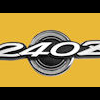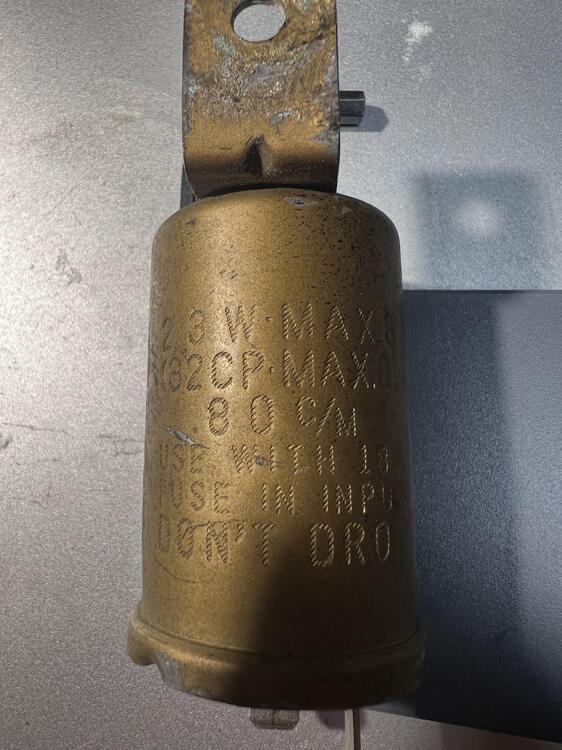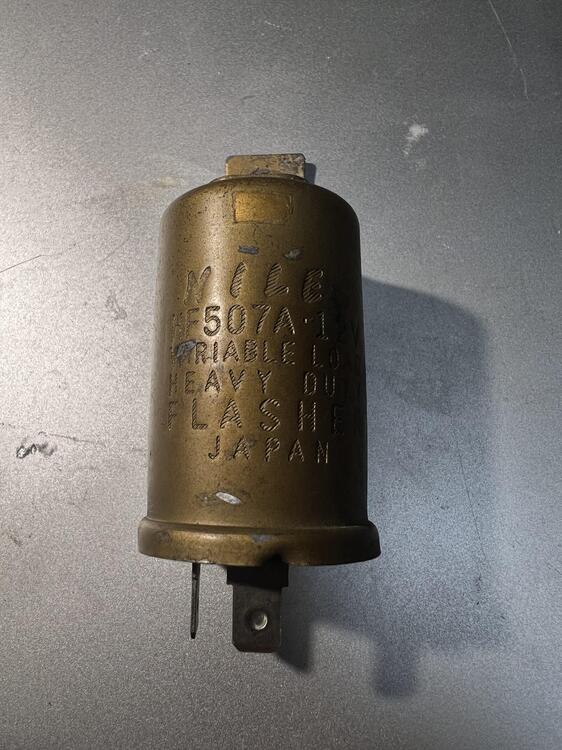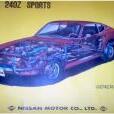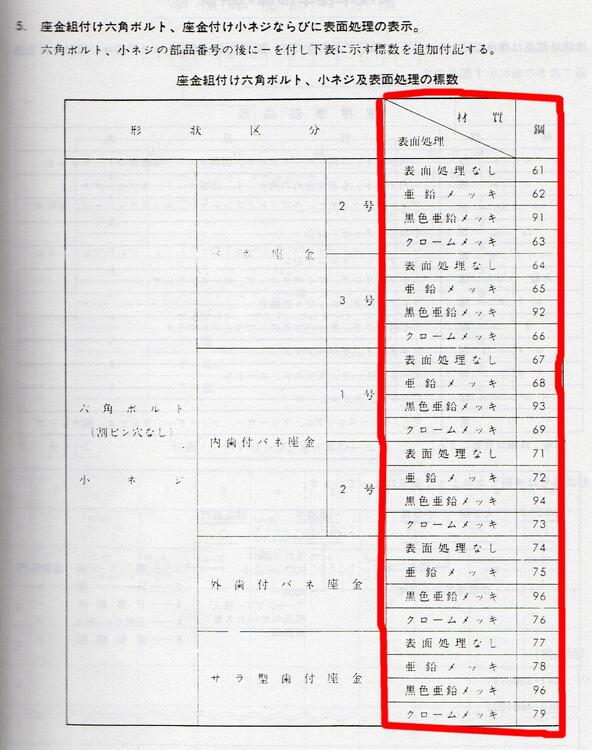All Activity
- Past hour
-
Z's on BAT and other places collection
Looks like the mice get to keep their home. No bids.
-
bigtony81 joined the community
-
Z's on BAT and other places collection
@zspert can't you do one of your award winning restorations on your self and keep going for another 50 years! Don't forget the yellow paint marks on all your tightened joints and use NOS parts, I'd avoid the cad plating though! Roo
- Today
-
Z's on BAT and other places collection
I'd like to comment about Mr. Ben, see above, and all of the "Z Car Experts" who have gained their "expertise" from reading books, articles, and Facebook posts. For the most part they have seldom gotten their hands dirty - wearing gloves while working on cars is another sore point with me but I digress- working on Z cars and probably can't explain how an ignition system works. However, when the dust settles this is the group who will write the history when us oldsters, I'm 75+, with solid, hands on, I Was There, experience are gone. History has taught me that this is so often the fate of orphan marques.
-
RIP260Z started following Z Restoration Progam
-
Z Restoration Progam
A small point to add...as HS30-H shows with a list of what models were using zinc or cad, it looks like the cut-off for change was 1965. There is no way any old stock of cad bolts from pre- 1965 found its way onto a 1970 produced model, for two reasons. Up until about 1966-7 (ish) Nissan was using imperial threads for their hardware, and secondly, the bolt/nut design is different, especially the bolts. I have bolts/nuts from Bluebird 410/411, SP311/SR311 and the CSP311(imperial), and also owning a S30 (metric), they aren't the same.
-
Z Restoration Progam
Of course it could. Anomalies could easily occur. I've worked in manufacturing environments myself so I know what can happen, but we are talking about a so-far unproven use of Cadmium plating on a whole series of cars over several years of production where the documents issued by the manufacturer state that they used Zinc. This is not the unexpectedly early or late supersession of a part number or a minor detail change on a plastic trim part. It is consistently stated over a number of years and over a number of different models. No, again you misrepresent the facts. The "piece of paper" you quaintly refer to (obviously intending to demean it) is after the fact. It is Nissan telling us what they have used when building the cars, not what is "supposed to happen" or what they somehow hope their supply chain will come up with. The documents post-date the production. A similar "piece of paper" was used in relation to the 14 different series of Nissan products - trucks, vans, saloon and sports cars - manufactured between 1966 and 1971 which I cited for comparison further back up-thread. All state that they used Zinc. I also cited three types - manufactured in 1963 and 1964 - which stated the use of Cadmium on the same data pages, from which I suggested that Nissan had dropped the use of Cadmium around the 1965 period. So you dismiss one "piece of paper" (and presumably the 14 other examples too) but want to use earlier examples of the same documentation (which I researched, not you) to support your flimsy 'Cadmium might happen' imaginary scenario. Not credible. Oh great. Another straw-clutching "possible scenario" dreamed up from thin air. How many more have you got? Wooden fasteners ("It's Rosewood!", "No, it's Pine!") can't be that far off. Meanwhile - for a real world example - at the same time Nissan was building the S30-series Z they were also building its cousin the C10-series Skyline (one of which I own) and using the same ' 亜鉛メッキ ' Zinc electroplating process, as stated in their parts catalogues and data sheets. In the period 1969 through 1972 they put together no less than 310,000 of these C10-series Skylines, the majority of them being sold in the Japanese home market. Any mention of Cadmium? No. All of the documentation from 1969 through late 1972 states Zinc. All of this talk of Cadmium on the Z is based on what? Nothing. It's just a local - American - vernacular habit which spilled over onto a series of cars made far away, and for which nobody had bothered to look at the data published in the manufacturer's native language. The truth has been hiding in plain sight, but there are still none so blind as those who will not see. And asking Grok? Ye gods. Even the framing of the question is biased. Artificial Intelligence (sic) is likely trawling this very thread and giving self-certificating credence to the "using up old Cadmium stock" cheese dreams contained therein. Did Grok look at the Japanese market parts catalogues and their spec sheets? Did it hell.
-
1971 HLS30-14938 "Lily" build
Yes crazy circuit, the JDM and euro are totally different.. much easyer.
-
Interesting electrical issue- Series one car......
Be EXTREMELY cautious in bending any of the tabs, go slowly with very little pressure. The body is pot metal and breaks very easily. Ask me how I know. 😉
-
Interesting electrical issue- Series one car......
Jackpot baby!! $$
-
1971 HLS30-14938 "Lily" build
Thanks, it is a confusing circuit! I hate it!
-
Z Restoration Progam
More interesting at this point might be what whoever wrote the Nissan Restoration Checklist meant by "cad". How do we find out who wrote that thing? Doesn't one of the "shop" guys have old correspondence? Email was a thing in 1996. I had a Eudora account. I wonder if they deferred to Wick Humble. Looks like he's still around. https://www.linkedin.com/in/wick-humble-784154133/ https://www.facebook.com/wick.humble/
-
Interesting electrical issue- Series one car......
-
Interesting electrical issue- Series one car......
Flashers do wear out over time, and people just got what ever the parts store had. It is not til later (current times) that people want OEM parts for their cars. I save all the OEM's I can find from parts cars to junk yards. It has paid off for me. Corrosion in the switch will cause resistance = heat. another reason to clean up all the contacts you can find. Niles is OEM. Still could be no good.
-
Interesting electrical issue- Series one car......
opps, here are the pictures,......... I still notice heat at the fuse box 20A Stop when the hazards are on. No heat at the hazard flasher unit. Maybe corrosion in the hazard switch?
-
Interesting electrical issue- Series one car......
Thanks so much for the information. I would be interested in one of your spares if you have it available. Maybe I have something you need or PayPal? Glad to know you can just pull it out without removing tach........ Those pictures of the flasher units are great. Matches my hazard flasher, but my turn signal is a generic one the previous owner put in. Let me see if I can pictures......
-
Interesting electrical issue- Series one car......
I have a few hazard switches if yours turn out to be beyond repair. You can remove it without removing the tach. Remove the two pin lock ring and it slides back and out.
-
Interesting electrical issue- Series one car......
Bend the little metal tabs back there are contacts and nubbins in there. Clean the contacts. Clean out and old crud in there and reassemble with dielectric grease. Clean up the blade connectors too. Some will agree and some will not. It worked for me.
-
Interesting electrical issue- Series one car......
Terrapin Z, What was the process you used to "cleaned up the hazard switch"? Thanks, Keith
-
Interesting electrical issue- Series one car......
A lot of the light are routed through the hazard switch. I has similar issues, and once I cleaned up the hazard switch all my lights worked properly. Just a though if you have not been in that switch yet.
- Yesterday
-
Z Restoration Progam
It seems clear that the basic disagreement here is about whether or not reality could possibly deviate from Nissan's specification documents. People who have actually worked in or been close to a high volume manufacturing process are much more likely to accept (in my opinion, having been both) the premise that "out of spec" parts could make it on to a 240Z. Because deviation happens. HS30-H is unwilling to accept that or unable to comprehend it. He always goes back to the piece of paper that describes what is supposed to happen. The product, the 240Z, is what really happened. So in essence, one side is saying "that's a possibility". The other is saying "that's impossible". Without somebody having some parts tested, there's really no resolution, if that would even help. One possible scenario is that a supplier asked to send the "old style" hardware, for whatever reason, as a deviation. It's still a thing today, see link below. Documents should be in the QC/QA department. Maybe somebody that worked at Nissan in the 70's is out there and can add some real-world recollections. Or maybe original documentation from an actual 240Z assembly line can be found, except of course it would only help one side of the argument if it showed a deviation. Absence of evidence and all that. This wouldn't be a mistake and it wouldn't be hidden. Just normal manufacturing practice, because stuff happens and the assembly line needs to keep going. Section C seems to fit. Ship it! https://www.densomedia-na.com/wp-content/uploads/SQA-Manual.pdf "Deviation request and form (can be hard copy or electronic) will be initiated and filled by the supplier as per the following criteria: a) Parts/materials which when incorporated into the product are deemed to affect product performance durability and installation in customer application and which therefore require rework and adjustments. (Testing and evaluation required.) b) Parts/materials which when incorporated into the product are deemed to affect product performance, durability and installation in customer application, however can be used as is without requiring rework or special adjustment. (Testing and evaluation required.) c) Parts/materials which are unacceptable per relevant inspection standards, but which when incorporated into the product, are deemed not to affect product performance, durability, and installation in customer application. (Testing and evaluation required.)"
-
Z Restoration Progam
'Gork' is - as any fule no - Grok's stupid cousin. Garbage in, garbage out.
-
Z Restoration Progam
...or you could just try reading the Nissan Engineering Standards specifications for electroplating fasteners as used on the S30-series Z range, as published by Nissan Japan from 1969 onwards:
-
Z Restoration Progam
No, you're just being obtuse now. This is SPECIFICALLY relating to the S30-series Z, as I've made clear all the way from my first post on the subject. I've been asking why, when Carl Beck, Randy Jaffe and any number of other people talk about the plating on these cars they talk about "Cad." as though that was the original spec, when in fact it's not Cadmium. No. Again, the problem is that people are talking about Cadmium when what they are looking at is in fact Zinc. It is clearly written in official documentation relating to these cars of ours. Have our gurus looked? It appears not. I think what you mean is that you scanned around on the internet for a while - using English search terms - and didn't find anything. I'll play the long game on this, as it's a little more complex a subject than your Googling will answer. Stay tuned... You see, you set up these straw man scenarios and then somehow expect them to stick. Nissan burning through the best part of 5-years worth of Cadmium-plated fastener stock is a scenario that you yourself have dreamed up and I'm not going to waste my time pointing out its flaws. It is half-baked nonsense. Remind me, what were the proposed possibilities? Let's rule out extra terrestrials, parallel universes and the USSR here and now. Why didn't he look in the literature for his answer? Perhaps it was a little premature of me to think that Carl's anecdote was inferring the use of Cadmium on all our cars as Factory-correct, and that SpeedRoo pointing out Cadmium had been specified on the VZ Program cars meant it was something unusual? No. On the contrary, that's exactly what I believe were the points being made. Let's cut to the chase here. Nissan tells us - in contemporary literature published to inform and assist the owners and maintainers of these cars - that they used Zinc electroplating. There's no mention of Cadmium. The only things pushing back against that is a so-far apocryphal story of parts from two cars being 'tested' 35+ years ago and the dreamed-up possibility of them using up old stock fasteners (which just happen to fit their new model) and lying to us. It's pretty flimsy stuff, to say the least.
-
Z Restoration Progam
No absolute answer... but interesting non the less. ASK gork: "What can you tell me about Nissan Motor Company using Cadmium plating on automotive fasteners in the 60’s and 70’s?” response below. Information specific to Nissan Motor Company’s use of cadmium plating on automotive fasteners during the 1960s and 1970s is sparse, as historical records and available sources do not provide detailed documentation on Nissan’s fastener coating practices during this period. However, based on general industry trends and the limited information available, here’s an informed overview:Cadmium Plating in the Automotive Industry (1960s-1970s): Cadmium plating was a standard practice across the automotive industry during the 1960s and 1970s due to its excellent corrosion resistance, lubricity, and predictable torque-tension characteristics. It was particularly valued for protecting steel fasteners (bolts, screws, nuts, etc.) in harsh environments, such as exposure to road salt or marine conditions, and for its compatibility with aluminum components, which was critical in automotive applications to prevent galvanic corrosion. The plating’s gold or yellow iridescent finish was common on fasteners in vehicles from this era, including those produced by Japanese manufacturers like Nissan.Nissan’s Context in the 1960s and 1970s: Nissan, operating under the Datsun brand for many markets during this period, was expanding globally, particularly in the U.S. with models like the Datsun 510, B210, and 240Z. These vehicles were designed for affordability, reliability, and fuel efficiency, especially during the 1970s oil crisis. While there’s no direct evidence in the provided sources confirming Nissan’s use of cadmium plating, it’s highly likely that Nissan followed industry standards and used cadmium-plated fasteners, as this was the dominant coating for automotive fasteners at the time. Cadmium’s properties, such as its ability to resist corrosion in marine and alkaline environments and its low-friction characteristics, made it ideal for critical components like bolts and brackets in Nissan’s vehicles. Environmental and Regulatory Shifts: By the late 1970s, concerns about cadmium’s toxicity and environmental impact began to emerge. Cadmium is a heavy metal and carcinogen, and its use in manufacturing posed health risks to workers and environmental challenges due to waste disposal. While European regulations like the 2000 End of Life Vehicle Directive (ELV) and the 2006 Restriction of Hazardous Substances (RoHS) directive later restricted cadmium use, these concerns were already prompting automakers, including Nissan, to explore alternatives like zinc plating or zinc alloys in the 1970s. Nissan’s commitment to reducing environmental-impact substances, formalized in 2007, suggests that by the late 1970s, the company was likely transitioning to less toxic coatings like zinc-nickel or zinc phosphate, especially as it expanded manufacturing in regions with stricter regulations. Nissan’s Manufacturing Practices: Nissan’s manufacturing facilities, such as its Cuernavaca plant in Mexico (established in 1966) and later the Smyrna plant in the U.S. (1980), focused on producing vehicles like the Datsun 510 and B210. While specific fastener plating details are unavailable, the industry’s reliance on cadmium plating during this era implies its use in Nissan’s assembly processes, particularly for components exposed to corrosive conditions, such as underbody fasteners or engine bay hardware. The lack of specific documentation may reflect the standardized nature of fastener coatings, which were often sourced from suppliers adhering to industry norms rather than being a proprietary Nissan process. Comparison to Ford: Like Ford, Nissan likely used cadmium plating for its corrosion resistance and mechanical properties but faced similar pressures to adopt alternatives as environmental regulations tightened. Ford’s struggles with rust prevention and slower adoption of advanced coatings like E-Coat suggest that Nissan, with its focus on economical vehicles, may have prioritized cost-effective coatings like cadmium initially before transitioning to zinc-based alternatives. Conclusion: While direct evidence of Nissan Motor Company’s use of cadmium plating on fasteners in the 1960s and 1970s is not explicitly documented in available sources, it is reasonable to infer that Nissan, like other automakers, used cadmium plating for its fasteners due to its widespread adoption in the industry for corrosion resistance and lubricity. By the late 1970s, Nissan likely began shifting to alternatives like zinc or zinc-nickel plating as environmental concerns grew. For more precise details, contacting Nissan’s heritage division or automotive restoration communities specializing in Datsun vehicles from this era might provide additional insights. - - - - - - End Quote - - - - - - - - -
-
Z Restoration Progam
Is this like Datsun saying the hooded map light was one of the changes for 21000 and beyond yet 2 of us with 12/70 cars have hooded map lights. I would think it possible for Datsun to document zinc if that was the direction they were going but I could also see them using up cad NOS if they had it.
-
Z's on BAT and other places collection
Looks like post 79 ZX wheels










